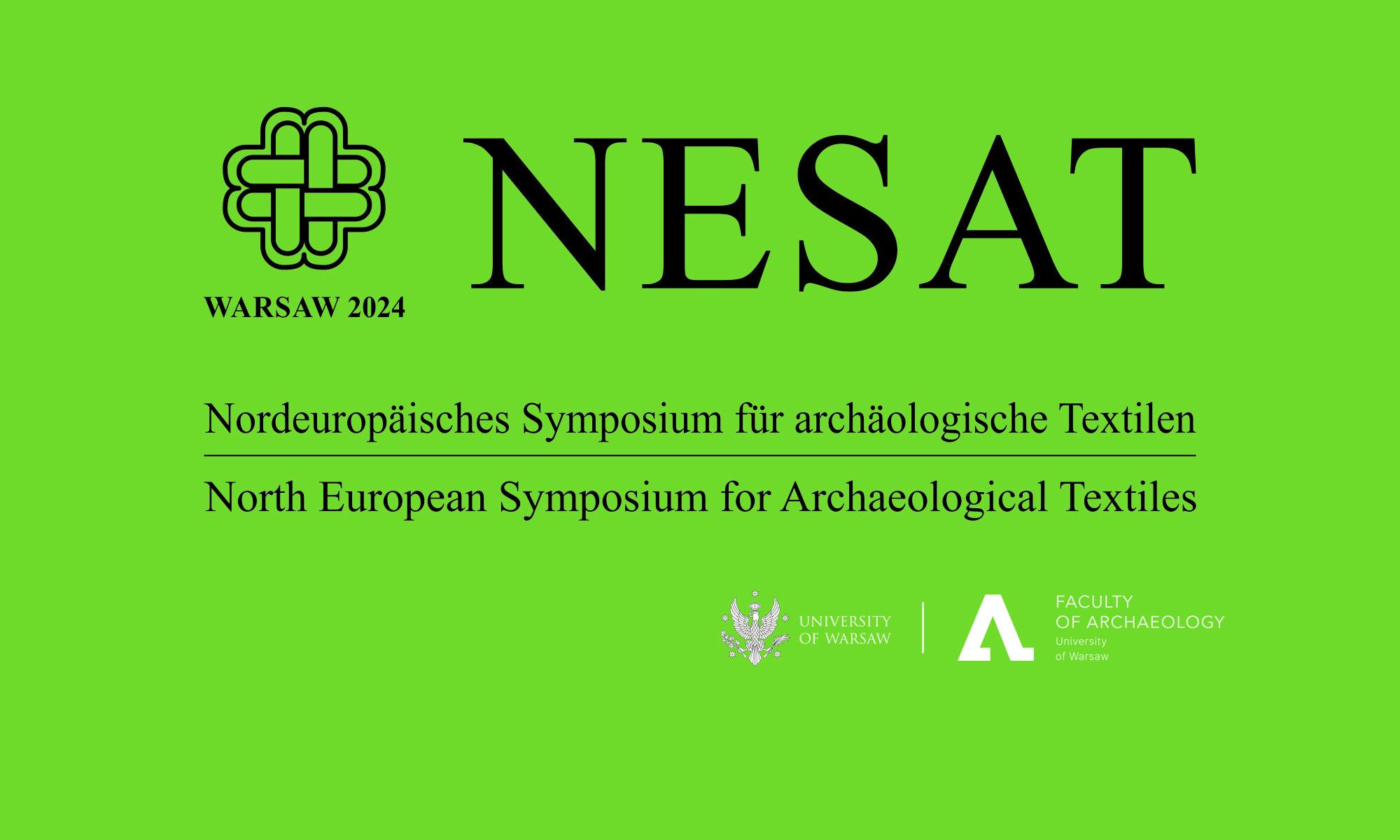
NESAT XV Conference Book of Abstracts and Programme (click for the PDF)
For the excursions plan, please see below
| Wednesday, 22nd May 2024 | ||
| 9.00-9.30 | Registration | |
| Opening of the NESAT XV conference in Warsaw – NESAT’s longue durée | ||
| 9.30-9.50 | Welcome from the organisers and the authorities of the Faculty of Archaeology and University of Warsaw | |
| 9.50-10.10 | Jerzy Maik (Polish Academy of Sciences) | Darstellungen mittelalterlicher Textilwerkzeuge in der Ornamentik der alten Lodzer Architektur. Ausdruck der langen Dauer (longue durée) nach Fernand Braudel |
| 10.10-10.30 | Frances Pritchard (University of Manchester) | A Romano-British pile rug excavated in London |
| Discussion 10:30-10:50 | ||
| Coffee break 10:50-11:10 | ||
| Focus on early textiles: crafting and consumption | ||
| 11.10-11.30 | Johanna Banck-Burgess (Landesamt für Denkmalpflege im Regierungspräsidium Stuttgart) | Technical textiles in focus: “no textiles – no fish” |
| 11:30-11:50 | Jenni A. Suomela (University of Helsinki), Mia Lempiäinen-Avci (University of Turku) and Satu Koivisto (University of Turku / University of Helsinki) | Skilful artisans of the Stone Age – crafting tree bast fishing nets |
| 11.50-12.10 | Aldona Kurzawska (Adam Mickiewicz University, Poznań), Iwona Sobkowiak-Tabaka (Adam Mickiewicz University, Poznań), Ewelina Miśta-Jakubowska (Jagiellonian University, Cracow) and Małgorzata Mrozek-Wysocka (Adam Mickiewicz University, Poznań) | Textile mineralization by calcium carbonate: a case study from Neolithic and Early Bronze Age graves in Poland |
| 12.10-12.30 | Cristina Ambrosioni (University of Padua), Maria Elena Bertoli (University of Glasgow), Susanna Harris (University of Glasgow) and Margarita Gleba (University of Padua) | Flax fibre processing during prehistory: experimental and archaeological evidence of semi-processed products and debris |
| Discussion 12:30-12:50 | ||
| Lunch 12:50-14:30 | ||
| Bringing to life Bronze and Iron Ages textiles and tools | ||
| 14.30-14.50 | Ulla Mannering (National Museum of Denmark) and Ida Demant (Land of Legends) | Bringing the Egtved girl to live |
| 14.50-15.10 | Karina Grömer (Natural History Museum Vienna) and Kayleigh Saunderson (University of Vienna) | Late Bronze Age gold threads and their implication on our understanding of textile technology in Central Europe |
| 15.10-15.30 | Joanna Słomska-Bolonek (Polish Academy of Sciences) | Can the graves of weavers be recognised? An attempt to interpret burials with loom weights |
| 15:30-15:50 | Ronja Lau (Ruhr-Universität-Bochum) | 50 shades of blue. The textile archaeological analyses of the finds from the Iron Age salt mine Dürrnberg – an overview of the project’s goals, methods and work status |
| Discussion 15:50-16:10 | ||
| Coffee break 16:10-16:30 | ||
| From the Roman and to the Viking era: new projects, new approaches | ||
| 16.30-16.50 | Francesca Coletti (University of Rome La Sapienza) and Margarita Gleba (University of Padua) | From local to global: archaeology, archaeometry, and digitalisation of Roman textiles from Pompeii to the Roman Empire (ADigTex) |
| 16.50-17.10 | Laure Meunier (University of Grenoble Alpes) | On the trail of Roman utility fabrics |
| 17.10-17.30 | Magdalena Przymorska-Sztuczka (Archaeological Museum in Biskupin) | Textile tools of the Wielbark culture: a case study from cemeteries in Czarnówko, Lubowidz and Wilkowo, Lębork district |
| 17.30-17.50 | Charlotte Rimstad (National Museum of Denmark) and Eva Andersson Strand (University of Copenhagen) | Viking Age textiles in the TRiVAL project |
| Discussion 17:50-18:10 | ||
| Thursday, 23rd May 2024 | ||
| Draped in meaning: new interpretations of messages interwoven in textiles | ||
| 9.10-9.30 | Georgia Gould (University College London) | Interwoven art of the Migration Period: tablet-woven textiles as portable decoration in Norway |
| 9.30-9.50 | Annika Larsson (TexArk) and Mohamed Guennoun (TexArk) | Investigation of two tablet-woven bands in Norway. Snartemo V and the Helgaland bog |
| 9.50-10.10 | Marie Wallenberg (Independent researcher) | A rare tablet weaving technique from Viking Age Valsgärde, Sweden |
| 10.10-10.30 | Jenni Sahramaa (University of Helsinki) and Mervi Pasanen (Independent researcher) | Costume reconstruction of the dress from Hollola Kirkkailanmäki grave 4 |
| Discussion 10:30-10:50 | ||
| Coffee break 10:50-11:10 | ||
| Weaving brilliance: metal threads and elite fabrics | ||
| 11.10-11.30 | Aldona Kurzawska (Adam Mickiewicz University, Poznań), Andrzej Michałowski (Adam Mickiewicz University, Poznań) and Iwona Sobkowiak-Tabaka (Adam Mickiewicz University, Poznań) | Metal ornaments and mineralized textiles: uncovering dress and identity in the 2nd/3rd century burial from Mirosław, Poland |
| 11:30-11:50 | Alexandra Makin (University of Glasgow) | An experimental embroidery project: exploring how and why an unusual gold thread found in the Galloway Hoard was made and used |
| 11.50-12.10 | Katrin Kania (Pallia) and Tracy Niepold (Bavarian Office of Conservation of Historical Monuments, Memmelsdorf) | Give me bling, but cheap! Reconstruction of the process for making membrane gold or silver threads |
| 12.10-12.30 | Olga Antowska-Gorączniak (Adam Mickiewicz University, Poznań), Aldona Kurzawska (Adam Mickiewicz University, Poznań) and Iwona Sobkowiak-Tabaka (Adam Mickiewicz University, Poznań) | In search of elite silk fabrics: investigating Early Medieval golden threads from Poznań’s stronghold |
| Discussion 12:30-12:50 | ||
| Lunch 12:50-14:30 | ||
| A world of fabrics: textiles across Medieval Europe and beyond | ||
| 14.30-14.50 | Susanna Harris (University of Glasgow), Mary Davis (National Museums Scotland), Alexandra Makin (University of Glasgow), Adrian Maldonado (National Museums Scotland) and Martin Goldberg (National Museums Scotland) | Textiles in hoards; insights from the Galloway Hoard, Scotland, 900 CE |
| 14.50-15.10 | Emeline Retournard (University of Clermont-Auvergne) | Underwear and silk for a 10th century priest: textiles from the supposed tomb of Odalric, archbishop of Reims (Marne, France) |
| 15.10-15.30 | Kayleigh Saunderson (University of Vienna) | Plain and simple? Textiles of the Early Medieval Avar period |
| 15.30-15.50 | Tetiana Krupa (A. Margulan Pavlodar Pedagogical University) | Research of golden threads of Ukraine and Kazakhstan: comparative analysis |
| Discussion 15:50-16:10 | ||
| Coffee break 16:10-16:30 | ||
| Analytical techniques and experimental approaches to conservation and dyes in the spotlight | ||
| 16.30-16.50 | Alice Burkhardt (Bavarian Office for the Conservation of Historical Monuments, Memmelsdorf), Barbara Dittrich (DWI – Leibniz Institute for Interactive Materials), Andrea Fischer (State Academy of Art and Design, Stuttgart) and Christoph Krekel (State Academy of Art and Design, Stuttgart) | Iron-induced degradation of keratin fibres: a preliminary study on archaeological woollen textiles including a first conservation experiment using phytates |
| 16.50-17.10 | Ulla Moilanen (University of Turku), Krista Wright (University of Helsinki) and Ina Vanden Berghe (Royal Institute for Cultural Heritage, Brussels) | Tampere Vilusenharju textiles from 10th–12th centuries AD Finland |
| 17.10-17.30 | Katarzyna Stasinska (AOC Archaeology Group) | Dyeing of vegetable fibres from the early Medieval period in the Northern Europe – an experimental approach |
| 17.30-17.50 | Jane Anne Malcolm-Davies (University of Copenhagen) and Paula Nabais (NOVA School of Science and Technology, Lisbon) | Scarlatto, carmine and rossi: investigating red dyes in early modern knitted caps |
| Discussion 17:50-18:10 | ||
| Friday, 24th May 2024 | ||
| All enveloping: textiles, tools and accessories from graves, towns and underwater | ||
| 9.10-9.30 | Ina Schneebauer-Meißner (Bavarian State Archaeological Collection) | Textiles and other organic materials from selected male graves from the Baiuvarian linear cemetery at Petting (county of Traunstein) |
| 9.30-9.50 | Małgorzata Grupa (Nicolaus Copernicus University, Torun) and Dawid Grupa (Nicolaus Copernicus University, Torun) | Medieval and modern wooden weaving tools from archaeological excavations in the Old Town of Elbląg – Bednarska XXXII. |
| 9.50-10.10 | Riina Rammo (University of Tartu) | Clothing as a sign of sexuality in medieval Southern Estonia: a semiotic study of an accessory |
| 10.10-10.30 | Tracy Niepold (Bavarian Office of Conservation of Historical Monuments, Memmelsdorf) and Helmut Voß (Bavarian Office for the Conservation of Historical Monuments, Memmelsdorf) | Linen, fur and silk: excavation, documentation and investigation of textile and other organic remains preserved in an early medieval child’s tomb |
| Discussion 10:30-10:50 | ||
| Coffee break 10:50-11:10 | ||
| Special considerations for studying funerary textiles and liturgical vestments: ethics, limitations and prospects | ||
| 11.10-11.30 | Sanna Lipkin (University of Oulu / University of Turku) and Liisa Seppänen (University of Helsinki / University of Turku) | Research ethics and funerary attire from Turku Cathedral (Finland) |
| 11:30-11:50 | Rebeka Nagy (Museum of Applied Arts, Budapest), Réka Semsey (Museum of Applied Arts, Budapest) and Ildikó Katalin Pap (Diocese of Szombathely) | Supplements to the research of the Hungarian liturgical vestments from the 15th century on the ground of a recently unearthed chasuble |
| 11:50-12:10 | Maria Cybulska (Łódź University of Technology) and Anna Drążkowska (Nicolaus Copernicus University, Toruń) | Exploring the Royal Burials. Problems, limitations and scientific potential based on research on textiles from the burials of the Polish king Sigismund III Vasa and his wife Constance |
| 12.10-12.30 | Beatrix Nutz (Independent researcher) | Wrapped in Love – The angel babies of Sogn Gion, Switzerland |
| Discussion 12:30-12:50 | ||
| Lunch 12:50-14:30 | ||
| Old finds – new perspectives and methods | ||
| 14.30-14.50 | Isabella Żołędziowska (University of Warsaw) | Textiles from the old Prussian cemetery in Równina Dolna, pow. Kętrzyński, Poland – a new perspective on old findings |
| 14.50-15.10 | Karolina Pallin (TexArk) | Digital fabrics. The use of 3D software to analyse and interpret archaeological dress finds |
| 15.10-15.30 | Kelvin Wilson (archaeological illustrator, independent researcher, author) | Out of the dark: light dress in the Neolithic |
| Final Discussion 15.30-16.10 | ||
| Coffee break 16.10-16.30 | ||
| 16.30-17.30 | Poster session | |
| 19:30-24:00 | Conference party in the Columned Hall of the University of Warsaw | |
Please note that all participants of NESAT and EuroWeb concluding conference are offered free entrance to the National Museum in Warsaw between 20th-25th May 2024. Simply present your conference badge at the Ticket Desk for admission.
Free guided tours to the Central Campus of University are available on 21st and 23rd May at 18:30 hour. Meeting point: in front of the Old Library Building. You are also welcome to pay a free visit the University of Warsaw Museum!
Programme of Excursions on 25th May 2024 (please click here to register)
- The National Museum in Warsaw: free guided tours to the Gallery of Polish Design and Gallery of Ancient Art
Meeting point: 10:00 hour – Entrance Hall to the Museum. Max. no. of participants: 30 persons. - The Linen Museum in Żyrardów and the Central Museum of Textiles in Łódź
Meeting point: 9:00 hour – Central Campus of the University of Warsaw. Max. no. of participants: 45 persons.
Cost per person: 120 zł/28 EUR (to be paid to the conference account) includes transfer by bus, guided tour to the Linen Museum in Żyrardów (translation will be provided by the NESAT organisers) and tickets to the Central Museum of Textiles. - The Royal Castle in Warsaw: free guided tour of the Royal Castle, including a pre-opening visit to the exhibition about the destruction and restoration project of the Castle
Meeting Point: 14:15 hour – the inner courtyard. Max. no. of participants: 20 persons.

